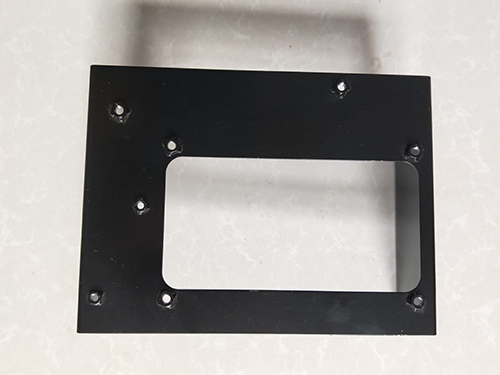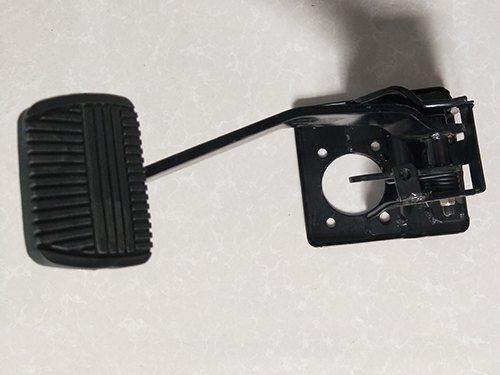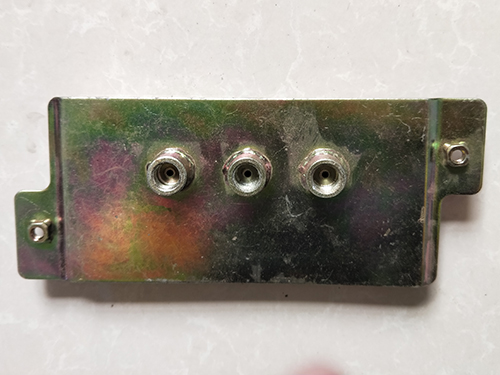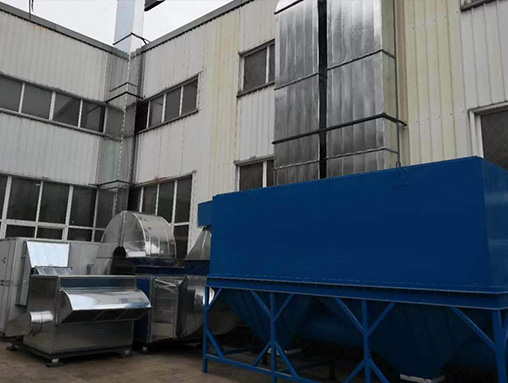The drawing performance and weldability of stamped parts
Stamping parts are the foundation of the car body, and automotive hardware stamping parts; Stamping is directly related to the quality of the car body, and the white body is an important component of the car, which determines the production and sales prospects of new models. In this sense, the quality of stamping parts is very important, and almost all design aspects of new models are related to it, including the matching of chassis components and interior design, which are also based on the white body or stamping parts. In modern new car models, there is a new type that maintains the chassis and other components unchanged, only changing the structure of the body to achieve the new model. From this, we can also see the importance of stamped parts.
The body is a stamped part; The purpose. In actual production, stamped parts are usually welded into individual components in the welding assembly plant, and then these components are welded into sub assemblies. Next, these sub assemblies are welded into a white body on the assembly table, and then adjusted and installed to form a complete white body. Therefore, the purpose of stamped parts is to form a complete white body.
The materials used for stamping parts are generally metal materials, mainly including requirements for lightweight body, strength and stiffness, continuously improving performance, ride comfort, and appearance quality. Although the research and application of lightweight materials have become increasingly widespread in recent years, steel plate materials maintain their position as body materials due to their own performance advantages, accounting for about 70% of the total steel materials used in vehicles. The main advantage of steel plate materials is low cost, especially compared to plastics and light alloys. Secondly, steel plate materials have the advantages of low processing difficulty, mature molding processes, easy recycling, and less environmental pollution.
Metal materials are commonly used in modern car bodies and have the advantages of being less prone to cracking during deep drawing and easy to process. Overall, steel plates used for car bodies should have good drawing performance, low yield point, large elongation, good weldability and coating properties, and a smooth surface.
Steel plate is a material with a large amount of body stamping parts. There are many types of steel plates. When designing a car, different performance steel plates should be selected according to the requirements of the body. For example, galvanized steel plates should be used for parts with high requirements, and steel plates should be used for parts with high stress tolerance.
(1) Cold rolled steel plate
According to current standards, steel plates are divided into two types: thin plates and thick plates. Steel plates with a thickness less than 4mm are called thin plates, while others are called thick plates. Rolling thin plates are divided into two types: cold-rolled steel plates and hot-rolled steel plates. Among them, cold-rolled steel plates have the advantages of size, smooth surface, low yield point, and good formability.
(2) Hot rolled steel plate
The composition of hot-rolled steel plate is basically the same as that of cold-rolled steel plate, but its mechanical properties, surface condition, and dimensional accuracy are not as good as cold-rolled steel plate. It is generally used for thicker and non appearance parts.
(3) Stainless steel plate
The characteristic of stainless steel plate is that its strength and hardness are greater than ordinary steel plate, so its stamping processing force is also relatively large; Secondly, its surface is smooth, which is beneficial for some stamping parts with high surface requirements. However, metal stamping parts are prone to scratches during stamping, and stainless steel stamping parts are no longer coated after forming. Therefore, surface scratches are a prominent problem in stainless steel stamping processing. The commonly used solution to this problem in engineering is to lay polyvinyl chloride film on the stainless steel plate to protect the surface of the stainless steel plate, prevent scratches, reduce friction, and improve its deep drawing performance.
It should be noted that stainless steel sheet stamping parts that have undergone complex deformation have high residual stress, which may cause aging cracking during storage. Therefore, it is generally required to perform timely heat treatment on the formed stainless steel sheet parts to reduce their residual stress.
(4) Steel plate
Steel plate is a new type of steel plate that is processed from ordinary steel plate. It has the characteristics of high yield point and tensile strength, but its proportion is only 75% of ordinary steel plate. Therefore, steel plate has significance in reducing vehicle weight and improving vehicle strength, as well as reducing energy consumption and improving vehicle collision performance. Modern car bodies often use steel plate.
The mechanism of steel plates generally sacrifices other stamping properties to a certain extent, such as reduced elongation, large rebound, and increased forming force. Steel plates usually reduce the thickness of stamped parts, which leads to a decrease in the anti dent ability of automotive stamped parts after the thickness is reduced. However, with the development of new steel plates in recent years, the formability of steel plates has been greatly improved, and they are widely used to replace ordinary steel plates to manufacture stamped parts for car bodies.
(5) Surface treatment of steel plates is one of the methods to improve the performance of car body steel plates. In recent years, surface treated steel plates have accounted for 60% to 80% of the usage of car body steel plates, and some cars even use surface treated steel plates entirely. Surface treated steel plate is made by coating materials such as zinc, zinc alloy, aluminum, lead tin alloy, etc. on ordinary steel plate or steel plate. There are single-sided and double-sided types. Coating materials on one side of the steel plate is called single-sided treated steel plate, and coating materials on both sides of the steel plate is called double-sided treated steel plate.
The advantages of surface treated steel plates are good performance, coating, and decoration. The disadvantage is that as the thickness of the coating increases, it may have adverse effects on the formability and weldability of the steel plate. Generally speaking, when the coating exceeds 40g/mm2, the formability and weldability of the steel plate cannot be achieved. The impact on weldability is mainly due to the possibility of contamination of the electrode head of the welding tongs by the coating during welding, especially when welding galvanized steel plates and ordinary steel plates. Therefore, when selecting the coating thickness of surface treated steel plates, the influence on formability and weldability should be considered.







